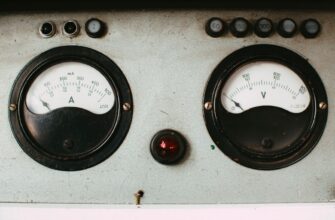🛡️ Mix USDT, Stay Untraceable
USDT Mixer helps you break blockchain trails with total anonymity. 🧩
Instant transactions, no KYC, and complete privacy — from just 0.5% fee. ⚡
The safest way to mix Tether on TRC20.
What is an Online Mixer and Why Use One?
An online mixer is a digital platform that allows you to blend, edit, and enhance audio tracks directly in your web browser or through cloud-based software. Unlike traditional hardware mixers, online versions eliminate the need for expensive equipment, making professional-grade audio production accessible to podcasters, musicians, and content creators. Key benefits include cost efficiency, remote collaboration capabilities, and intuitive interfaces perfect for beginners. With 78% of audio creators now using digital tools according to SoundOn’s 2023 report, mastering online mixing is essential for producing studio-quality results from anywhere.
Essential Tools for Online Mixing
Before starting, gather these fundamental resources:
- Computer & Internet: Minimum 4GB RAM with stable broadband connection
- DAW (Digital Audio Workstation): Browser-based options like BandLab or installed software like Audacity
- Audio Interface: USB devices (e.g., Focusrite Scarlett) for microphone/instrument input
- Monitoring: Studio headphones (Sony MDR-7506 recommended) or flat-response speakers
- Reference Tracks: Professional recordings in your genre for quality comparison
Step-by-Step Guide to Online Mixing
- Prepare Your Tracks
Import recorded audio files into your DAW. Ensure all clips are trimmed, labeled, and organized in separate tracks (vocals, instruments, etc.). Normalize volume to -6dB peak for headroom. - Balance Volume Levels
Adjust faders to create hierarchy: Lead vocals loudest, rhythm section mid-level, background elements softest. Aim for consistent peaks at -12dB on the master meter. - Apply EQ Adjustments
Cut problematic frequencies: Reduce 200-500Hz to decrease muddiness and boost 2-5kHz for vocal clarity. Use high-pass filters on non-bass tracks. - Add Dynamic Control
Insert compressors on vocal/bass tracks: Set 4:1 ratio, 3-6dB gain reduction. Use limiters on master channel (-1dB threshold) to prevent clipping. - Create Spatial Depth
Apply reverb (decay time: 1.2-2s) and delay (1/4 note sync) on auxiliary sends. Pan instruments 10-30% left/right for width. - Enhance with Effects
Add saturation on drums, chorus on guitars, and de-essers on vocals. Always A/B test with effects bypassed. - Finalize & Export
Set master volume to -1dB peak, render as 24-bit WAV for archiving. Create MP3 (320kbps) for distribution.
Pro Tips for Flawless Online Mixes
- Reference commercial tracks hourly to maintain perspective
- Take 10-minute breaks every hour to prevent ear fatigue
- Use spectrum analyzers to identify frequency clashes
- Export test mixes and play them on phone/car speakers
- Automate volume/effects for dynamic movement
5 Critical Mistakes to Avoid
- Over-compressing (causing lifeless audio)
- Ignoring phase issues when layering sounds
- Mixing on laptop speakers alone
- Adding effects before balancing levels
- Skipping vocal tuning where needed
Online Mixer FAQ
Q: Can I collaborate remotely with online mixers?
A: Absolutely! Cloud-based DAWs like Soundtrap allow real-time collaboration where multiple users can edit sessions simultaneously from different locations.
Q: How much does online mixing software cost?
A: Many powerful options are free (Audacity, BandLab). Premium tools like LANDR or Soundtrap start at $5/month for advanced features.
Q: What’s the biggest advantage over hardware mixers?
A: Recallability – save unlimited session versions instantly. No more losing settings when power cuts out!
Q: Do I need acoustic treatment for online mixing?
A: While ideal, it’s not mandatory. Use correction software like Sonarworks Reference and mix at low volumes for reasonable accuracy in untreated rooms.
Q: How long does it take to learn online mixing?
A: Basic proficiency takes 20-30 hours of practice. Mastering requires 100+ hours – start with simple projects and gradually tackle complex mixes.
🛡️ Mix USDT, Stay Untraceable
USDT Mixer helps you break blockchain trails with total anonymity. 🧩
Instant transactions, no KYC, and complete privacy — from just 0.5% fee. ⚡
The safest way to mix Tether on TRC20.








